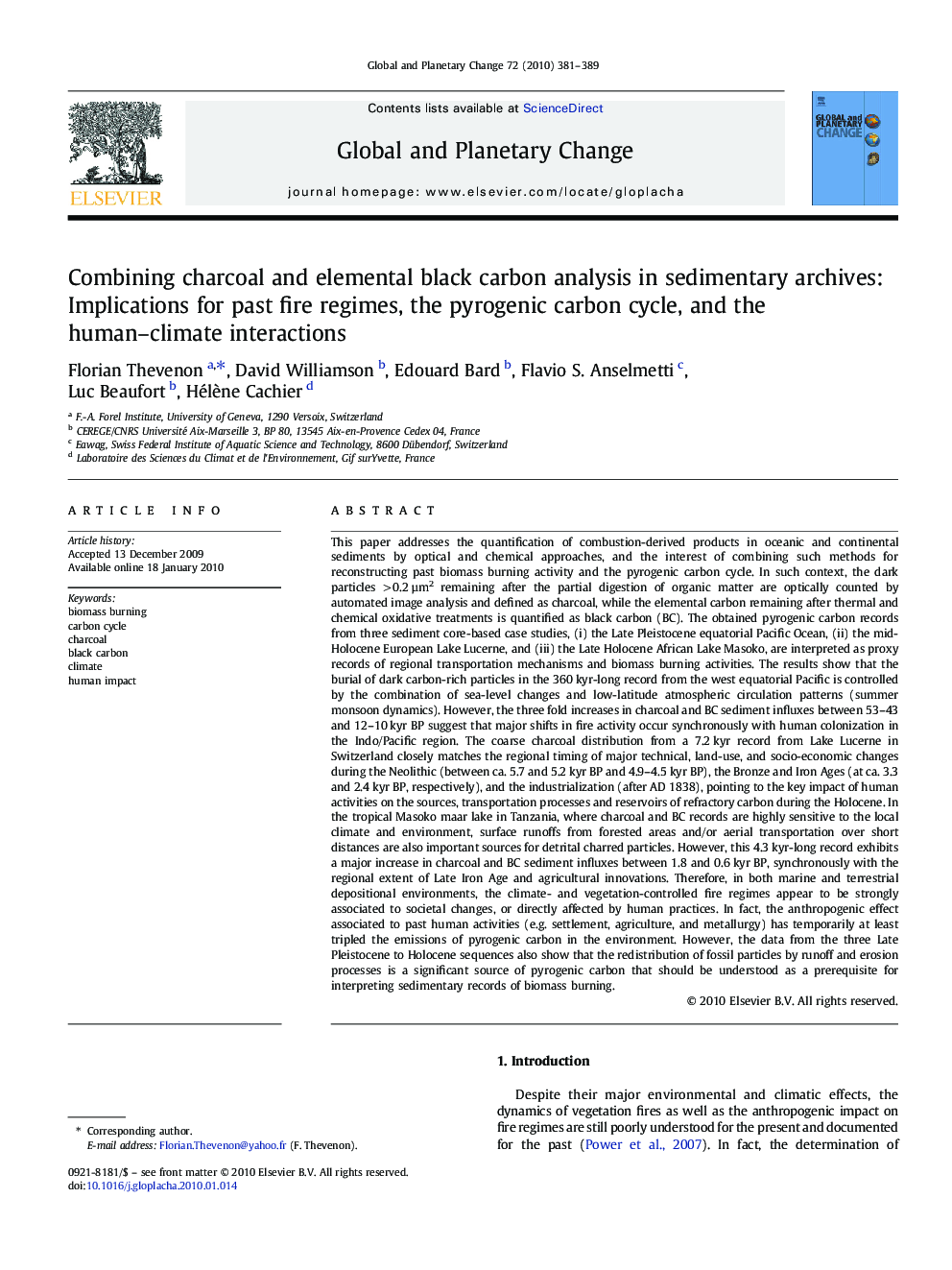| کد مقاله | کد نشریه | سال انتشار | مقاله انگلیسی | نسخه تمام متن |
|---|---|---|---|---|
| 4463927 | 1313691 | 2010 | 9 صفحه PDF | دانلود رایگان |

This paper addresses the quantification of combustion-derived products in oceanic and continental sediments by optical and chemical approaches, and the interest of combining such methods for reconstructing past biomass burning activity and the pyrogenic carbon cycle. In such context, the dark particles > 0.2 µm2 remaining after the partial digestion of organic matter are optically counted by automated image analysis and defined as charcoal, while the elemental carbon remaining after thermal and chemical oxidative treatments is quantified as black carbon (BC). The obtained pyrogenic carbon records from three sediment core-based case studies, (i) the Late Pleistocene equatorial Pacific Ocean, (ii) the mid-Holocene European Lake Lucerne, and (iii) the Late Holocene African Lake Masoko, are interpreted as proxy records of regional transportation mechanisms and biomass burning activities. The results show that the burial of dark carbon-rich particles in the 360 kyr-long record from the west equatorial Pacific is controlled by the combination of sea-level changes and low-latitude atmospheric circulation patterns (summer monsoon dynamics). However, the three fold increases in charcoal and BC sediment influxes between 53–43 and 12–10 kyr BP suggest that major shifts in fire activity occur synchronously with human colonization in the Indo/Pacific region. The coarse charcoal distribution from a 7.2 kyr record from Lake Lucerne in Switzerland closely matches the regional timing of major technical, land-use, and socio-economic changes during the Neolithic (between ca. 5.7 and 5.2 kyr BP and 4.9–4.5 kyr BP), the Bronze and Iron Ages (at ca. 3.3 and 2.4 kyr BP, respectively), and the industrialization (after AD 1838), pointing to the key impact of human activities on the sources, transportation processes and reservoirs of refractory carbon during the Holocene. In the tropical Masoko maar lake in Tanzania, where charcoal and BC records are highly sensitive to the local climate and environment, surface runoffs from forested areas and/or aerial transportation over short distances are also important sources for detrital charred particles. However, this 4.3 kyr-long record exhibits a major increase in charcoal and BC sediment influxes between 1.8 and 0.6 kyr BP, synchronously with the regional extent of Late Iron Age and agricultural innovations. Therefore, in both marine and terrestrial depositional environments, the climate- and vegetation-controlled fire regimes appear to be strongly associated to societal changes, or directly affected by human practices. In fact, the anthropogenic effect associated to past human activities (e.g. settlement, agriculture, and metallurgy) has temporarily at least tripled the emissions of pyrogenic carbon in the environment. However, the data from the three Late Pleistocene to Holocene sequences also show that the redistribution of fossil particles by runoff and erosion processes is a significant source of pyrogenic carbon that should be understood as a prerequisite for interpreting sedimentary records of biomass burning.
Journal: Global and Planetary Change - Volume 72, Issue 4, July 2010, Pages 381–389